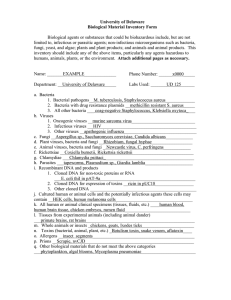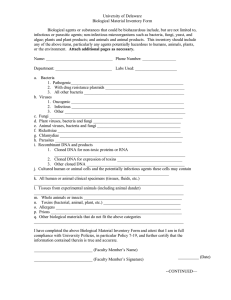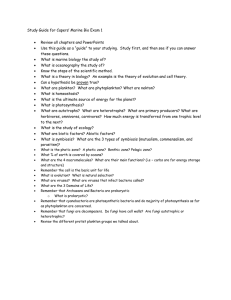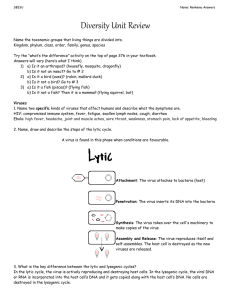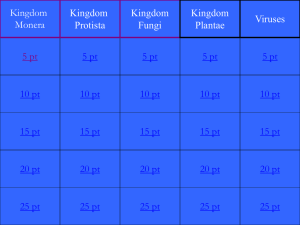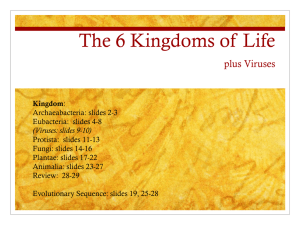ClassificationBacteriaViruses ATA StudyGuide Answers
advertisement
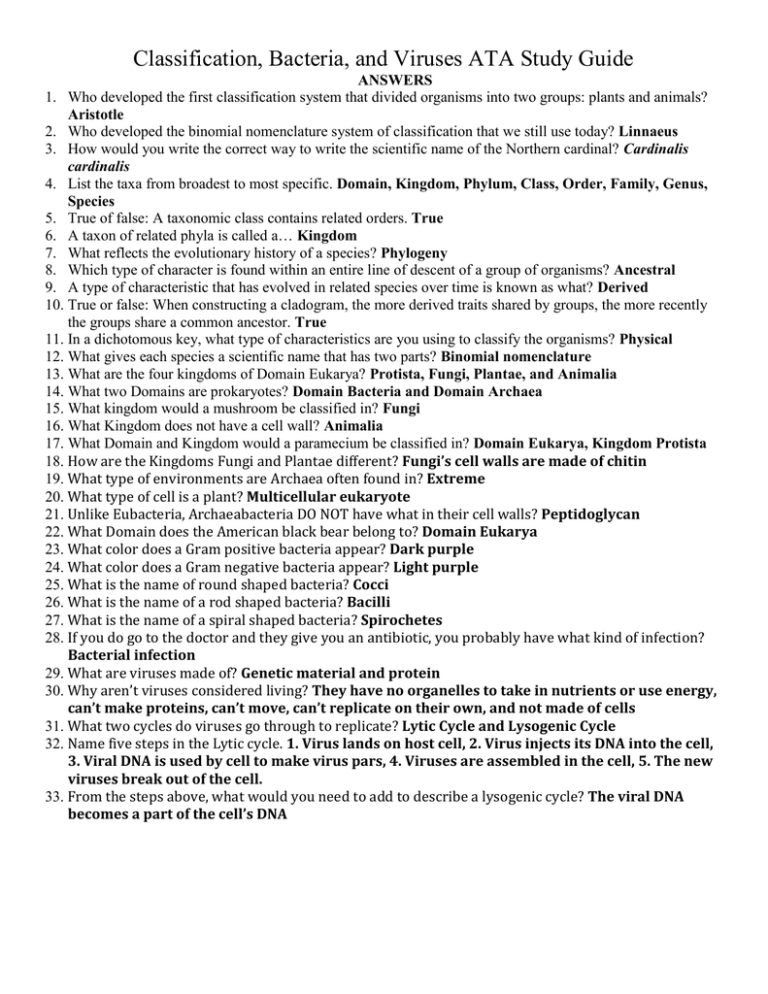
Classification, Bacteria, and Viruses ATA Study Guide ANSWERS 1. Who developed the first classification system that divided organisms into two groups: plants and animals? Aristotle 2. Who developed the binomial nomenclature system of classification that we still use today? Linnaeus 3. How would you write the correct way to write the scientific name of the Northern cardinal? Cardinalis cardinalis 4. List the taxa from broadest to most specific. Domain, Kingdom, Phylum, Class, Order, Family, Genus, Species 5. True of false: A taxonomic class contains related orders. True 6. A taxon of related phyla is called a… Kingdom 7. What reflects the evolutionary history of a species? Phylogeny 8. Which type of character is found within an entire line of descent of a group of organisms? Ancestral 9. A type of characteristic that has evolved in related species over time is known as what? Derived 10. True or false: When constructing a cladogram, the more derived traits shared by groups, the more recently the groups share a common ancestor. True 11. In a dichotomous key, what type of characteristics are you using to classify the organisms? Physical 12. What gives each species a scientific name that has two parts? Binomial nomenclature 13. What are the four kingdoms of Domain Eukarya? Protista, Fungi, Plantae, and Animalia 14. What two Domains are prokaryotes? Domain Bacteria and Domain Archaea 15. What kingdom would a mushroom be classified in? Fungi 16. What Kingdom does not have a cell wall? Animalia 17. What Domain and Kingdom would a paramecium be classified in? Domain Eukarya, Kingdom Protista 18. How are the Kingdoms Fungi and Plantae different? Fungi’s cell walls are made of chitin 19. What type of environments are Archaea often found in? Extreme 20. What type of cell is a plant? Multicellular eukaryote 21. Unlike Eubacteria, Archaeabacteria DO NOT have what in their cell walls? Peptidoglycan 22. What Domain does the American black bear belong to? Domain Eukarya 23. What color does a Gram positive bacteria appear? Dark purple 24. What color does a Gram negative bacteria appear? Light purple 25. What is the name of round shaped bacteria? Cocci 26. What is the name of a rod shaped bacteria? Bacilli 27. What is the name of a spiral shaped bacteria? Spirochetes 28. If you do go to the doctor and they give you an antibiotic, you probably have what kind of infection? Bacterial infection 29. What are viruses made of? Genetic material and protein 30. Why aren’t viruses considered living? They have no organelles to take in nutrients or use energy, can’t make proteins, can’t move, can’t replicate on their own, and not made of cells 31. What two cycles do viruses go through to replicate? Lytic Cycle and Lysogenic Cycle 32. Name five steps in the Lytic cycle. 1. Virus lands on host cell, 2. Virus injects its DNA into the cell, 3. Viral DNA is used by cell to make virus pars, 4. Viruses are assembled in the cell, 5. The new viruses break out of the cell. 33. From the steps above, what would you need to add to describe a lysogenic cycle? The viral DNA becomes a part of the cell’s DNA


